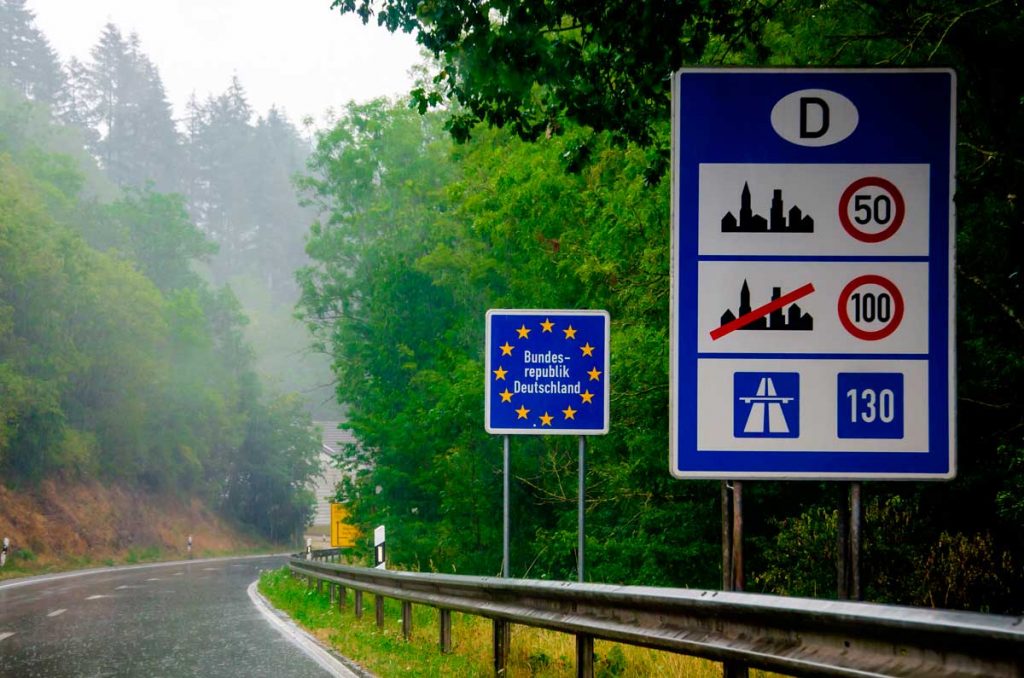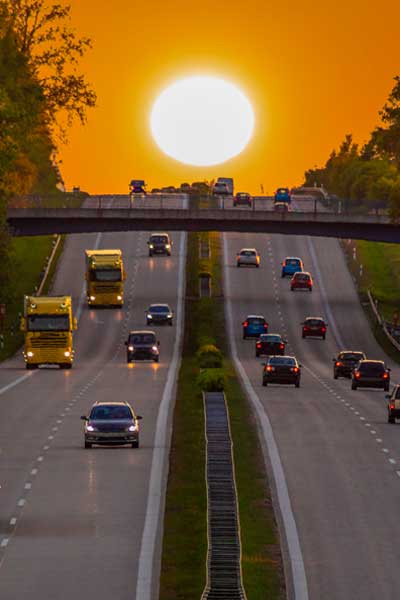Sustainability, safety, and electric cars with limited autonomy add uncertainty to the future of a very popular measure in the country

For lovers of powerful cars, German autobahns or motorways with no speed limits are a kind of paradise on earth, roads that allow you to step on the accelerator without fear of fines. Safety and the increased risk of serious injury in a traffic accident are not taken into account here. Sustainability is not taken into account either.
But speed is not the only factor that affects the mortality rate in accidents, and not all German motorways apply this measure, which is unprecedented in the rest of the world, nor does the absence of speed limits, which is very popular among German citizens, make much sense when the horizon is the electric car, whose autonomy is affected at high speeds.
A few myths about autobahns need to be dispelled. The reality is that not all German motorways are speed limit-free. If you want to push the accelerator, you have to look for where it is permitted, because around 40% of German motorways have a speed limit. Trucks are only allowed to travel at a maximum of 80 kilometers per hour and drivers must always and everywhere drive at a speed adapted to the circumstances of the road, i.e. depending on the traffic, weather conditions, and the asphalt itself.
Additionally, throughout Germany there is a recommended speed limit of 130 km/h. In reality, unlimited speed is only possible on a few stretches of motorway during the day, and never at night. In fact, studies indicate that the average speed of cars on German motorways is 125 kilometers per hour.

A political issue
Speed and safety are often inversely proportional. But there are other risks. Speed and sustainability do not fit together either, since, logically, a car with a combustion engine that moves quickly requires more fuel and emits more greenhouse gases.
The issue of sustainability has thus entered into debate in Germany, where the majority are still in favor of the current state of affairs. All parliamentary political parties, with the exception of the Greens, are in favor of not changing the speed limit on the autobahns. Environmentalists, on the other hand, emphasize the reduction in emissions if speed limits are restricted.
Some calculations, such as those made by the Federal Environment Agency a few years ago estimated that 6.7 million tons of carbon dioxide would be saved if Germany were to restrict speeds to 120 or 130 kilometers per hour, like neighboring countries; in other words, there would be 4.2% less pollution. With total emissions of more than 65,000 megatons of CO2 by Germany as a whole, this does not seem like a measure with a great impact. And this is due, in part, to the fact that, as some studies show, only 2% of drivers drive above 160 kilometers per hour, and 77% do so below 130.
However, the Greens, who have been part of the government, albeit in coalition, do have a speed limit in their program for environmental reasons. The problem with its implementation is that no other party is considering this restriction, as it is an unpopular measure. In fact, other options have been considered for the same purpose, such as limiting traffic on motorways at weekends, but these have been ruled out.

Speed and safety

Logic would suggest that the higher the speed on the motorway, the higher the risk and, therefore, the higher the mortality rate. But the truth is that Germany is doing better than the European average in terms of the rate of fatal accidents on the roads. It is, in fact, the fifth country in the European Union with the best records in this regard, only surpassed by Sweden, Denmark, Ireland and Finland.
In Germany, between 31 and 34 people die in traffic accidents per million inhabitants. The average in the European Union is between 42 and 46 deaths from this cause. In Spain, with speed limits within the average, i.e., 120 kilometers per hour on the motorway, the figure is between 29 and 36.
Are there more accidents on autobahns? Of the 264,000 accidents a year, 15,000 occur on German motorways, but not all of them have unlimited speed limits. In other words, less than 6% occur on this type of road, and not all of them occur on roads with no speed limits. In fact, only 12% of the 2,700 fatalities occurred on motorways.
Taking into account total journeys and reducing the figures to absolute and comparative figures, for every 1,000 accidents in Germany there were four deaths in urban areas, 21 on motorways and 24 on rural roads. However, these figures do not take into account the kilometers travelled on each type of road.
According to figures from ADAC, Germany’s most popular automobile club, 1.5 people die for every million kilometers driven on German motorways, while 4.7 people die for every million kilometers driven on federal or regional roads. Speed does not therefore seem to be the only decisive factor in saving lives in the event of an accident.

Limits in the world

The speed limit, beyond being a number on a sign, reflects how each country manages mobility, road safety and sustainability. Germany is not strictly a unique case in Europe, as the Isle of Man also has no restrictions. This small island is not part of the European Union. In addition, its winding roads make it unappealing to step on the accelerator.
Italy, on the other hand, stands out with its maximum speed limit of 150 kilometers per hour on certain stretches of motorway, making it the second country in the world with the highest limits. However, on the majority of its network, traffic is limited to 130 kilometers per hour. Countries such as France and the Netherlands opt for a standard of 130, although in adverse weather conditions this is lowered, as is the case in France, where it drops to 110 kilometers per hour. Norway, on the other hand, is an example of caution: its maximum speed limit of 90 kilometers per hour on motorways makes it the country with the most restrictive speed limit on the continent.
Outside Europe, the contrasts are equally striking. In Japan, the maximum speed on motorways is 125 kilometers per hour, while in countries such as Morocco and Mexico it is around 120 kilometers per hour, adjusted according to road conditions and urban areas.
In the United States, regulations vary by state, but the maximum speeds range from 89 to 129 kilometers per hour. Argentina and Peru also have limits of 120 to 130 kilometers per hour on specific stretches, and are notable for their flexibility on certain national or departmental roads. Curiously, Cyprus and Norway are at opposite ends of the spectrum in terms of speed. While Cyprus sets a maximum of 100 and generally 90, Norway sets it at 80, with exceptions on highway stretches, where the speed can reach 110.
Write: Guillem Sanchís